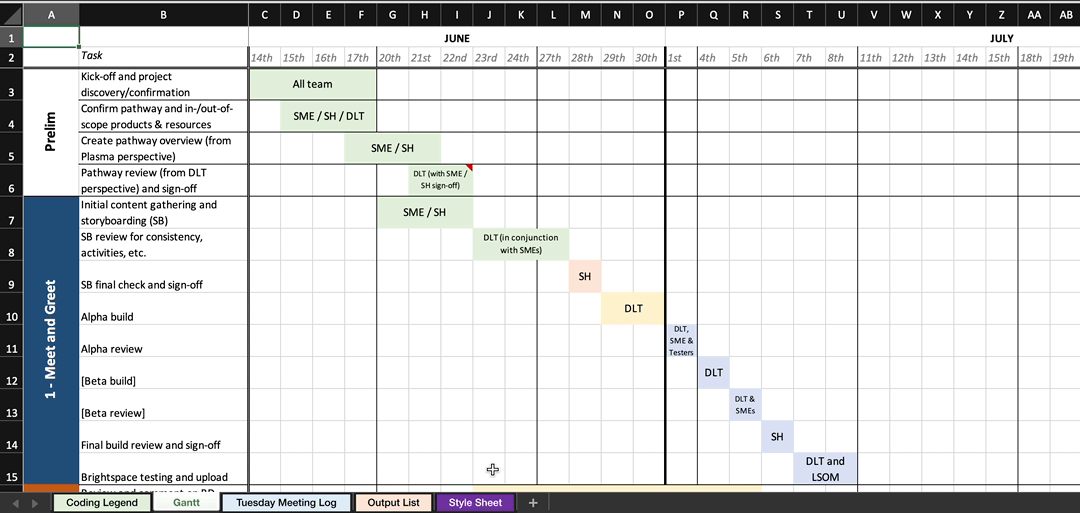
| Project Management in Plasma for Medicine
Background
An urgent request for digital learning content was received from a team looking to rapidly train new Plasma donor carers and nurses. With a time limits of just six weeks, I was tasked with both managing the full project and assisting with the development of 50 modules and assessments for induction purposes.
Approach
I called on my experience of project management from large university research projects, obtaining as much background information as possible. I then met with key stakeholders and subject matter experts to understand the specific requirements of the project, as well as setting up core dates across the six weeks to form Agile sprints. I also spent time understanding how similar induction and training programmes in the organisation functioned to get an idea of realistic offering and expectations.
Solution
I used Microsoft Teams in combination with Microsoft Excel to create an all-in-one workbook, available to all project members. I designed and incorporated five tabs: a Coding Legend for any colours and acronyms employed; a Gantt chart the split five iterative cycles over six weeks; a meeting log which followed a “Successes, Challenges, Lessons, Risks and Actions” model; an output list to show the status of each individual product (including any develop notes, review status and location, sign-offs required, and so on), and a style sheet for the visual and verbal resources to be made consistent throughout the 50 products. In all interactions where I took the role of project manager, I followed the core concepts of the Compassionate Leadership model to promote progress while minimising workload stress.

A brief demonstration of parts of the workbook, showing parts of the project's Gantt chart, the meeting log, and the resource development list.
Impact
Having a centralised point of information and a leadership presence thorough Microsoft Teams ensured that all 50 projects were delivered on time and to the quality agreed. This centralisation meant that all core information was accessible and transparent. In addition, structuring weekly meetings using the workbook and the “Successes, Challenges, Lessons, Risks and Actions” model ensured a positive and productive atmosphere for all involved.
⥪ Return to portfolio homepage